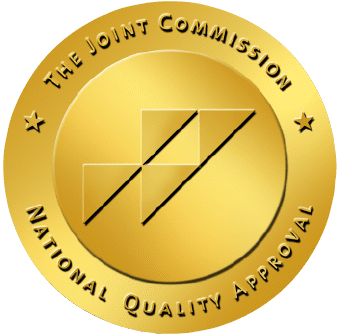How Long Does
Meth Stay in Your System
Table of Contents
Methamphetamine, known on the streets as meth, crystal, or ice, is a potent central nervous system stimulant that poses severe risks to health and well-being. Understanding the duration meth remains in the system is vital for addressing substance abuse issues effectively, as it impacts treatment strategies, legal implications, and personal recovery journeys. This article aims to provide a comprehensive overview of methamphetamine, from its effects on the body to the factors influencing its detection times, offering a guide for those seeking to overcome addiction or support others in their battle against substance abuse.
What is
Methamphetamine
Methamphetamine stands out as a formidable stimulant that substantially alters brain function and overall activity levels. Known for its rapid delivery of euphoria and heightened alertness, meth is highly addictive and often abused for its performance-enhancing effects. Users consume meth through various methods such as smoking, snorting, and injecting, leading to effects that include but are not limited to increased energy, enhanced focus, and a distorted sense of well-being. The high from meth can make users feel invincible and overly confident, but these sensations are fleeting and often lead to devastating lows.
Factors Affecting
Meth Detection Time
Several key factors influence how long meth remains detectable in a user’s system:
- Dosage: The larger the amount of meth taken, the longer the body needs to break it down and clear it from the system.
- Frequency of Use: Regular users have meth accumulate in their body, which can increase the overall time it takes for the drug to be metabolized completely.
- Metabolic Rate: People with faster metabolisms will process and eliminate meth quicker than those with slower metabolic rates.
- Overall Health: Effective functioning of the liver and kidneys significantly impacts how quickly meth is metabolized and eliminated. Healthier individuals typically process substances more quickly.
- Age and Body Mass: Generally, younger individuals with more muscle mass process substances like meth faster than older adults or those with higher percentages of body fat.
How meth is Processed
Through the Body
The process of methamphetamine in the body is multifaceted and involves several stages:
- Absorption: The rate of absorption is influenced by the method of intake, with smoking or injecting providing almost immediate effects due to direct entry into the bloodstream.
- Distribution: Meth circulates through the bloodstream, reaching the brain and other organs where it exerts its stimulating effects.
- Metabolism: The liver plays a crucial role in metabolizing meth, converting it into metabolites, some of which can be active and contribute further to the drug’s effects.
- Excretion: Meth is primarily excreted through urine, although it can also be detected in saliva, sweat, and hair, where it may remain for extended periods.
Detection Windows
For Meth
Meth can be detected in the body using various methods, each with its own window of detection:
- Urine tests: The most common form of drug testing, capable of detecting meth for approximately 1 to 7 days after use, depending on the level of usage.
- Blood tests: These tests can detect meth for about 1 to 3 days post-use and are used to determine recent drug use.
- Saliva tests: Similar to blood tests, saliva tests offer a detection window of 1 to 4 days and are less invasive.
- Hair follicle tests: These tests provide a much longer detection window, showing drug use for up to 90 days or more, as drug metabolites bind to the hair shaft.
Effects of Meth
On Health
The health impacts of meth use are severe and can be categorized into short-term and long-term effects:
- Short-term effects: Immediate consequences of meth use include increased heart rate and blood pressure, elevated body temperature, and extreme wakefulness. Users may experience a decrease in appetite, leading to significant weight loss.
- Long-term effects: Prolonged meth use can lead to more severe health issues, including heart damage, liver and kidney damage, dental problems (commonly known as “meth mouth”), and skin sores from picking at the skin.
- Mental health implications: Meth significantly affects mental health, leading to conditions such as anxiety, depression, intense paranoia and psychosis. Long-term use can trigger chronic psychosis, characterized by hallucinations and delusional thinking.
The Importance of Medical Detox
for Meth Addiction
Detoxification, commonly referred to as detox, is the pivotal first step in the recovery process for those struggling with methamphetamine addiction. Medical detox is crucial because it helps manage the acute and potentially dangerous physical symptoms of withdrawal under professional supervision. This section will explore why medical detox is essential for those looking to recover from meth addiction.
Safety and Management of Withdrawal Symptoms
Meth withdrawal can be intensely uncomfortable and sometimes life-threatening. Symptoms range from severe psychological effects, such as anxiety, depression, and paranoia, to physical symptoms like fatigue, increased appetite, and profound sleep disturbances. In some cases, individuals may experience extreme agitation, hallucinations, or suicidal thoughts. Medical detox provides a safe environment where healthcare professionals can monitor and manage these symptoms, reducing the risk of harm.
Medication-Assisted Treatment (MAT)
During medical detox, doctors may use medication-assisted treatment to ease withdrawal symptoms and cravings associated with meth cessation. Medications such as bupropion and modafinil can be prescribed to mitigate the depression and decrease the fatigue often experienced by those in early recovery. These medications are not a cure for meth addiction but are tools used to stabilize the individual so that they can engage in further treatment, such as counseling and behavioral therapies.
Support and Structure
Medical detox facilities offer structured support that goes beyond medical care. Patients have access to emotional and psychological support through counseling and can begin the process of therapy during their stay. This structured environment helps prevent relapse in the early stages of recovery when the risk is highest. The routine nature of a meth detox program also helps individuals re-establish patterns in their daily life free from substance use.
Foundation for Long-Term Recovery
Detox is only the first step in a long journey toward recovery from drug addiction. By effectively managing withdrawal symptoms and providing a safe, supportive environment, medical detox lays the foundation for the next phases of treatment. This includes various forms of therapy that address the psychological aspects of addiction, essential for long-term sobriety. Engaging in comprehensive treatment after detox significantly improves outcomes and helps individuals develop the skills needed to maintain recovery.
Overcome
Meth Addiction
Understanding how long meth stays in your system and recognizing the signs of its use is crucial for timely intervention and effective treatment. If you or a loved one is struggling with meth addiction, get in touch with Rise Sobriety Center in Glendale to learn more about our detoxification and drug rehab programs. Recovery is possible, and individuals can regain control over their lives.
Frequently Asked
Questions
Meth typically leaves the system within 3 to 7 days, but this can vary based on individual health factors and the frequency of use.
While specific measures like staying hydrated and maintaining overall health can aid in the process, the body’s natural detoxification process primarily determines the speed at which meth is expelled.
Home testing kits for meth can provide a good indication of recent use, though they are not as reliable as laboratory tests. False positives and false negatives can occur, depending on the quality of the kit and the user’s adherence to instructions.
Early signs of meth use include excessive talkativeness, decreased appetite, dilated pupils, unusual sweating, and sleep disturbances. Behavioral changes may also be evident, such as increased agitation or aggression.
Families can support a member struggling with meth addiction by fostering a supportive environment that encourages treatment, participating in family therapy sessions, and accessing resources like support groups that offer education and emotional support.


